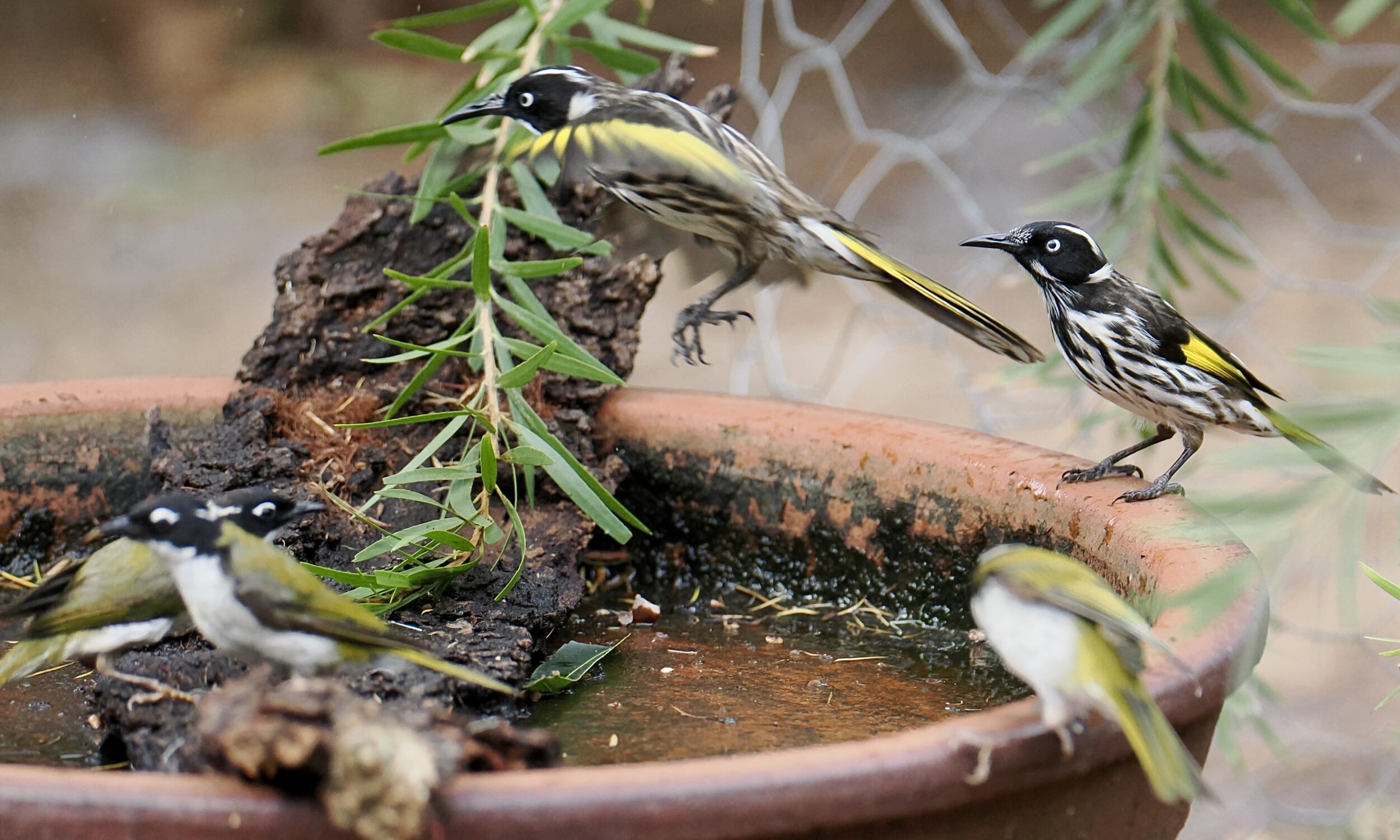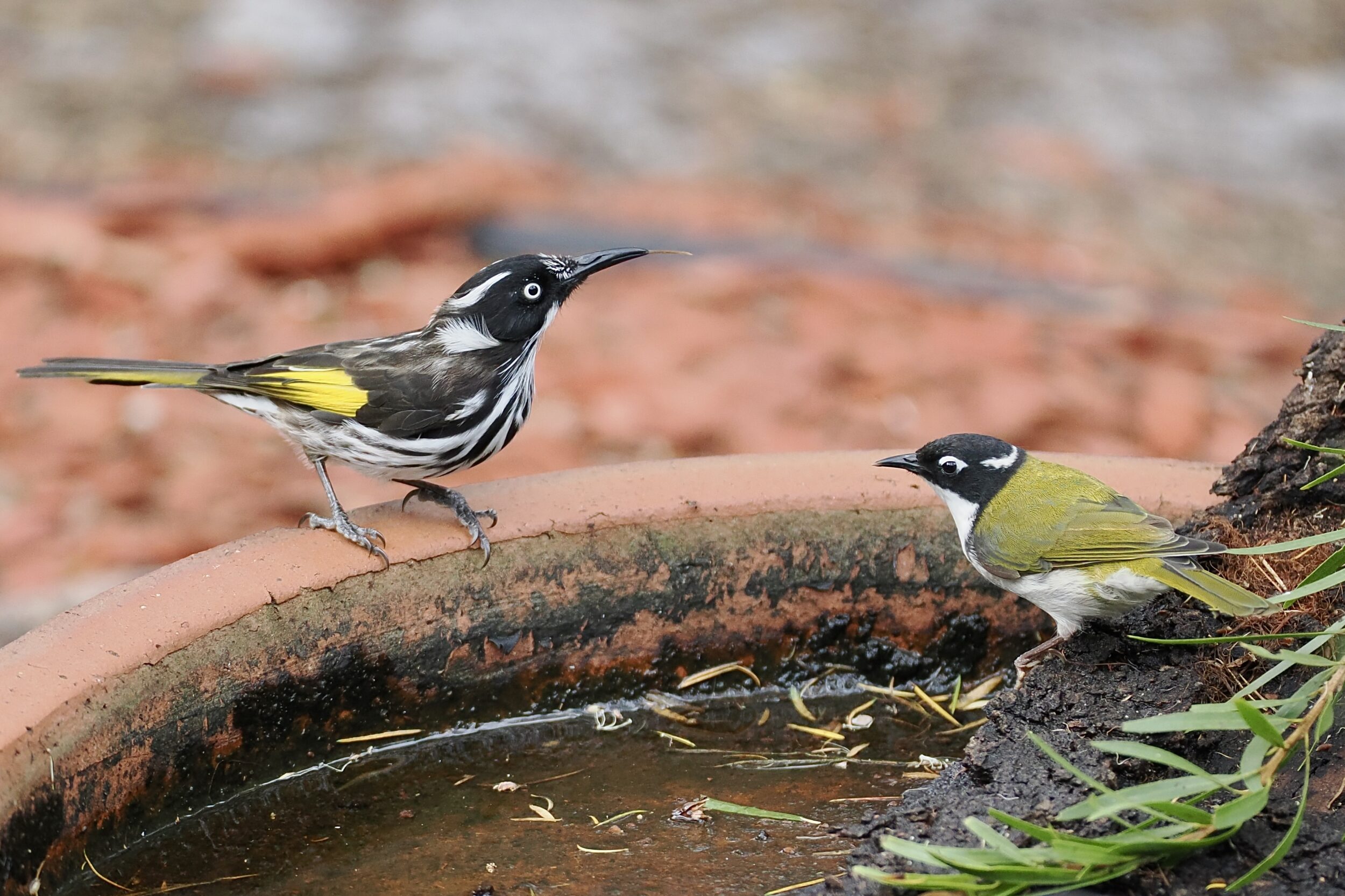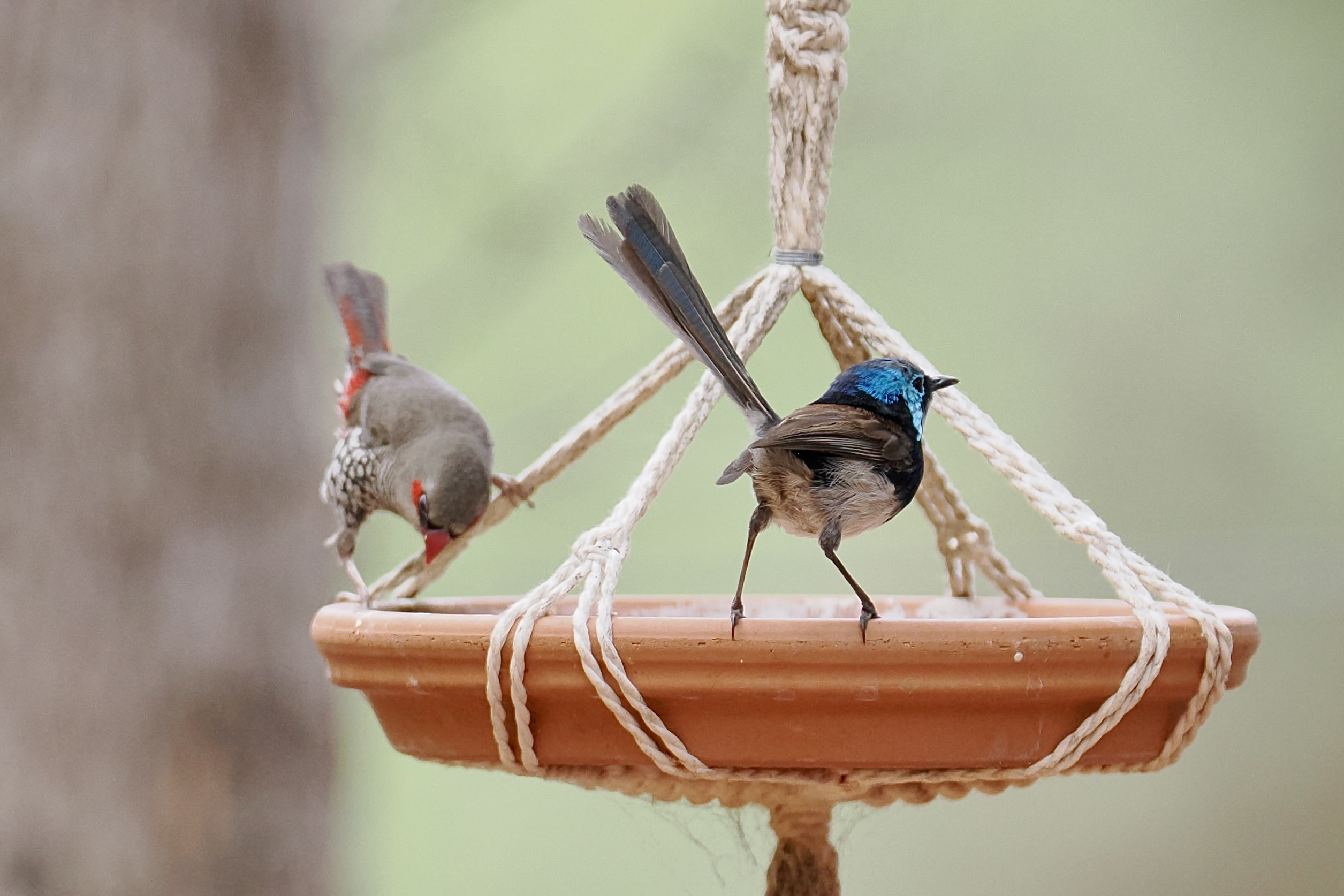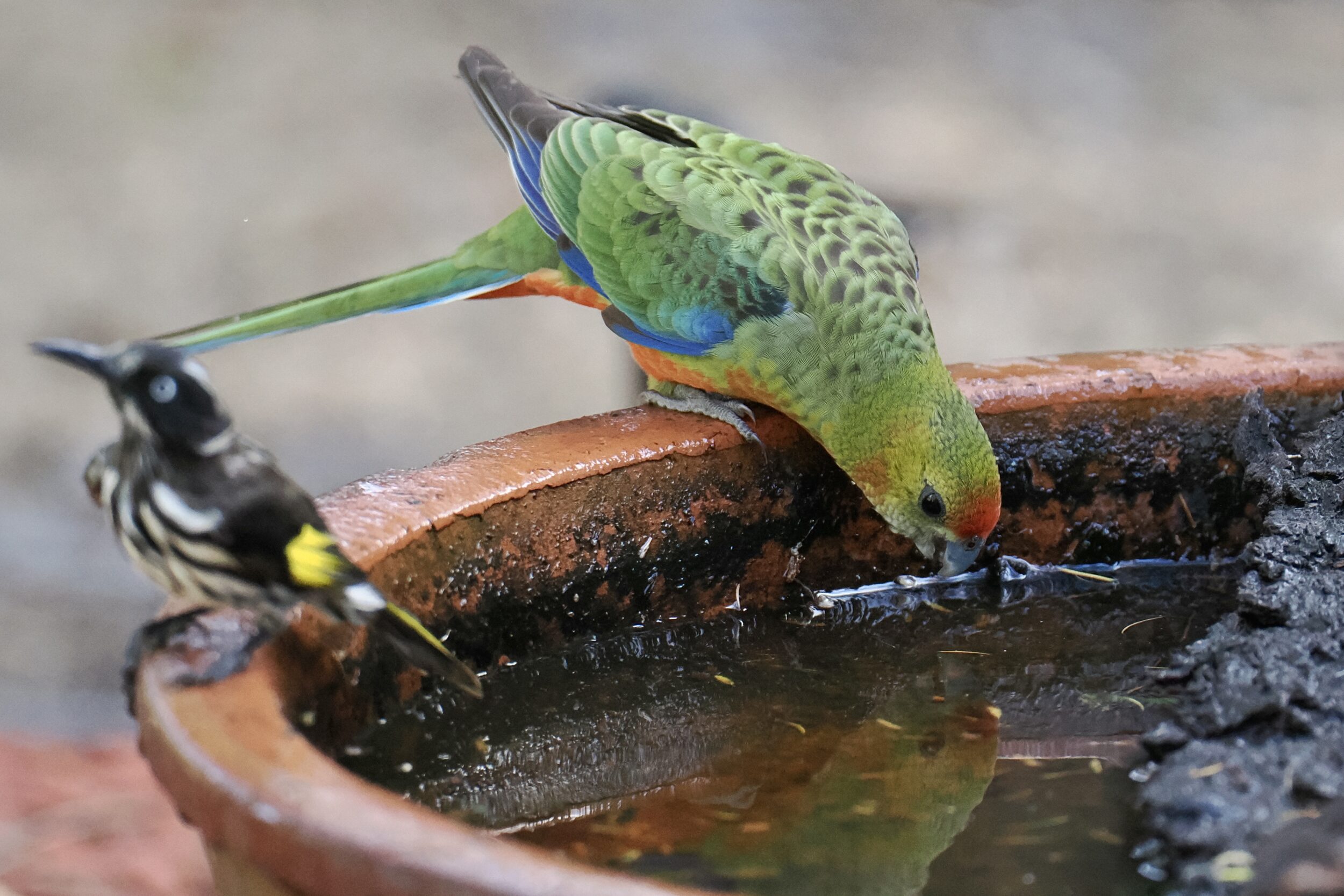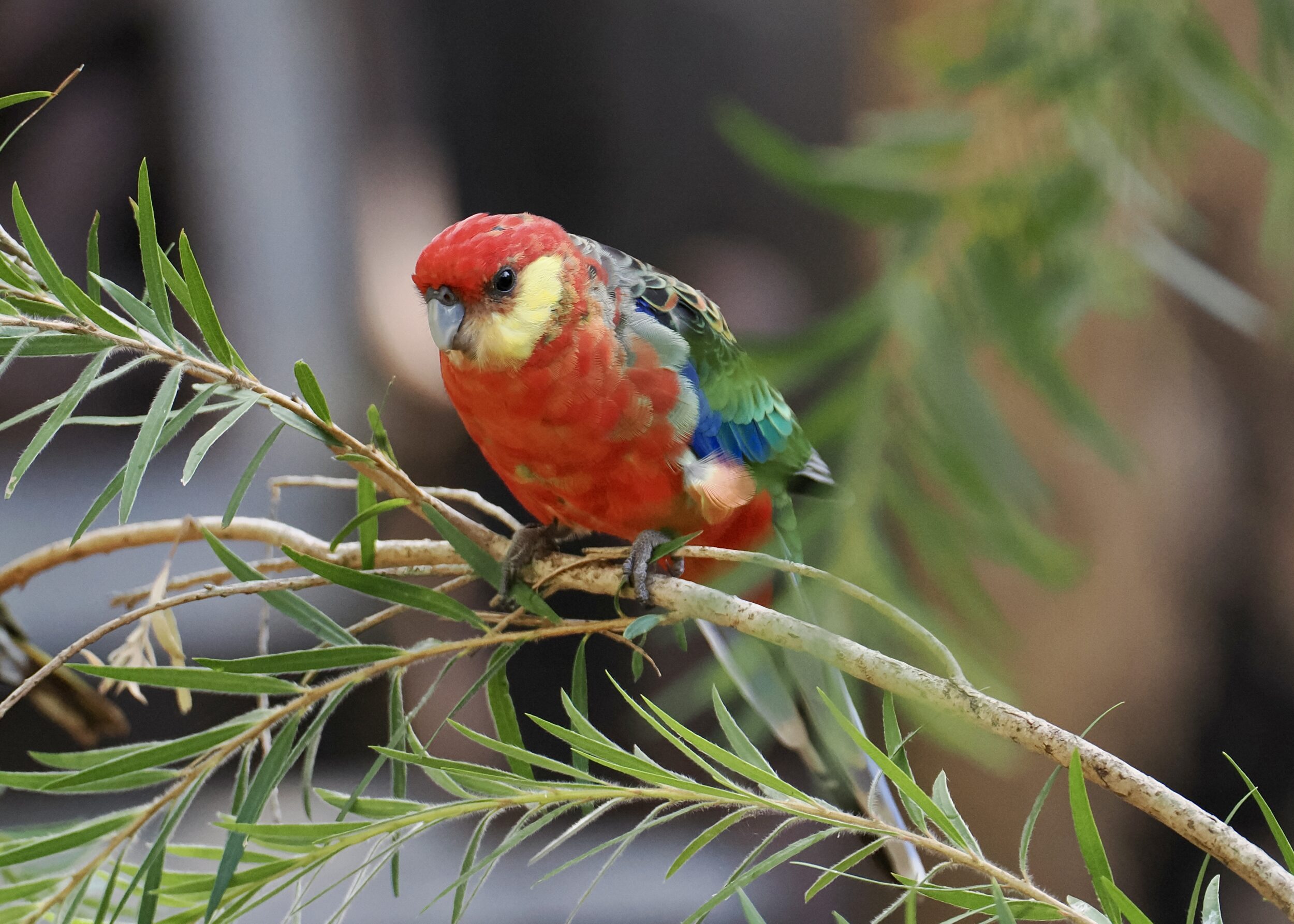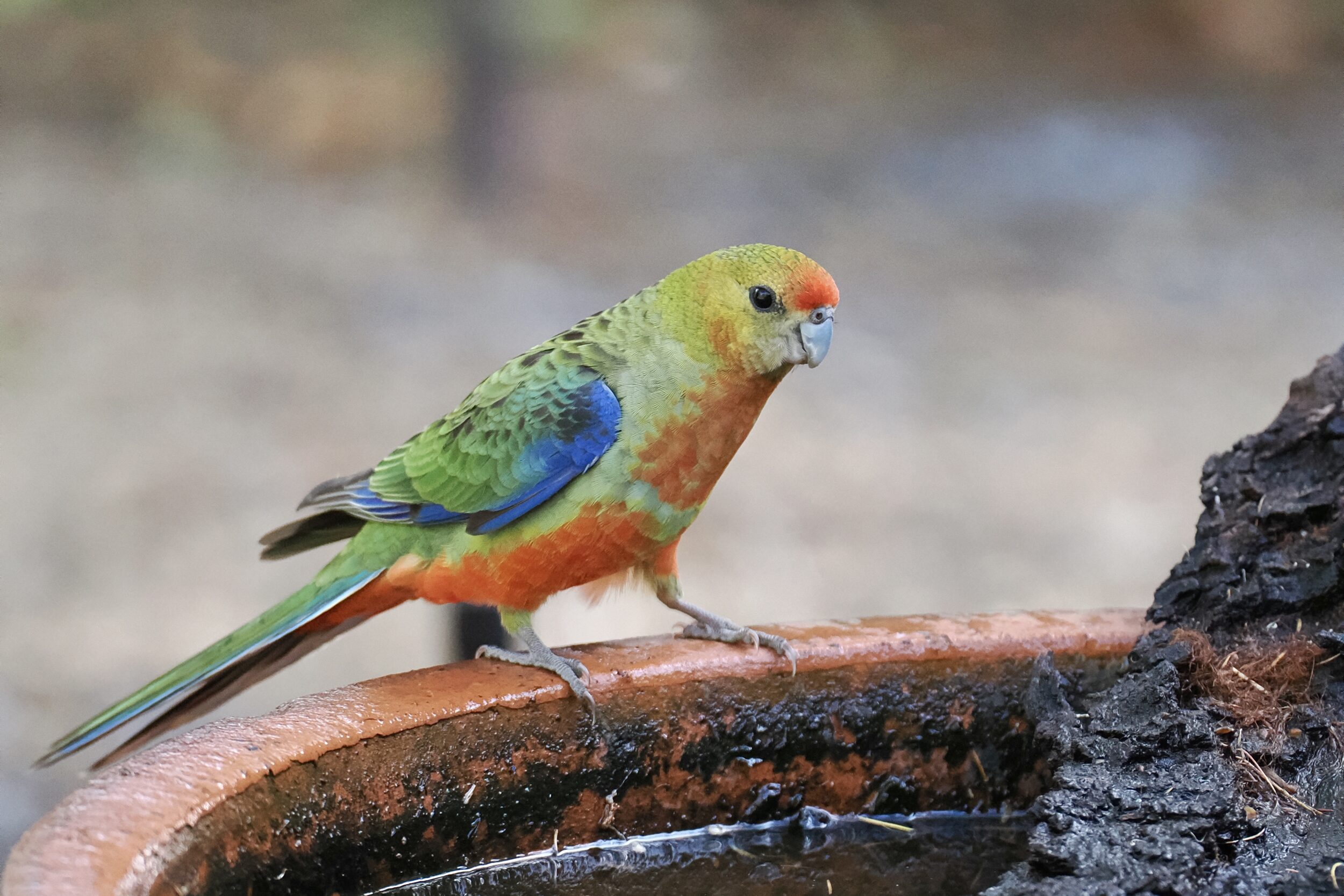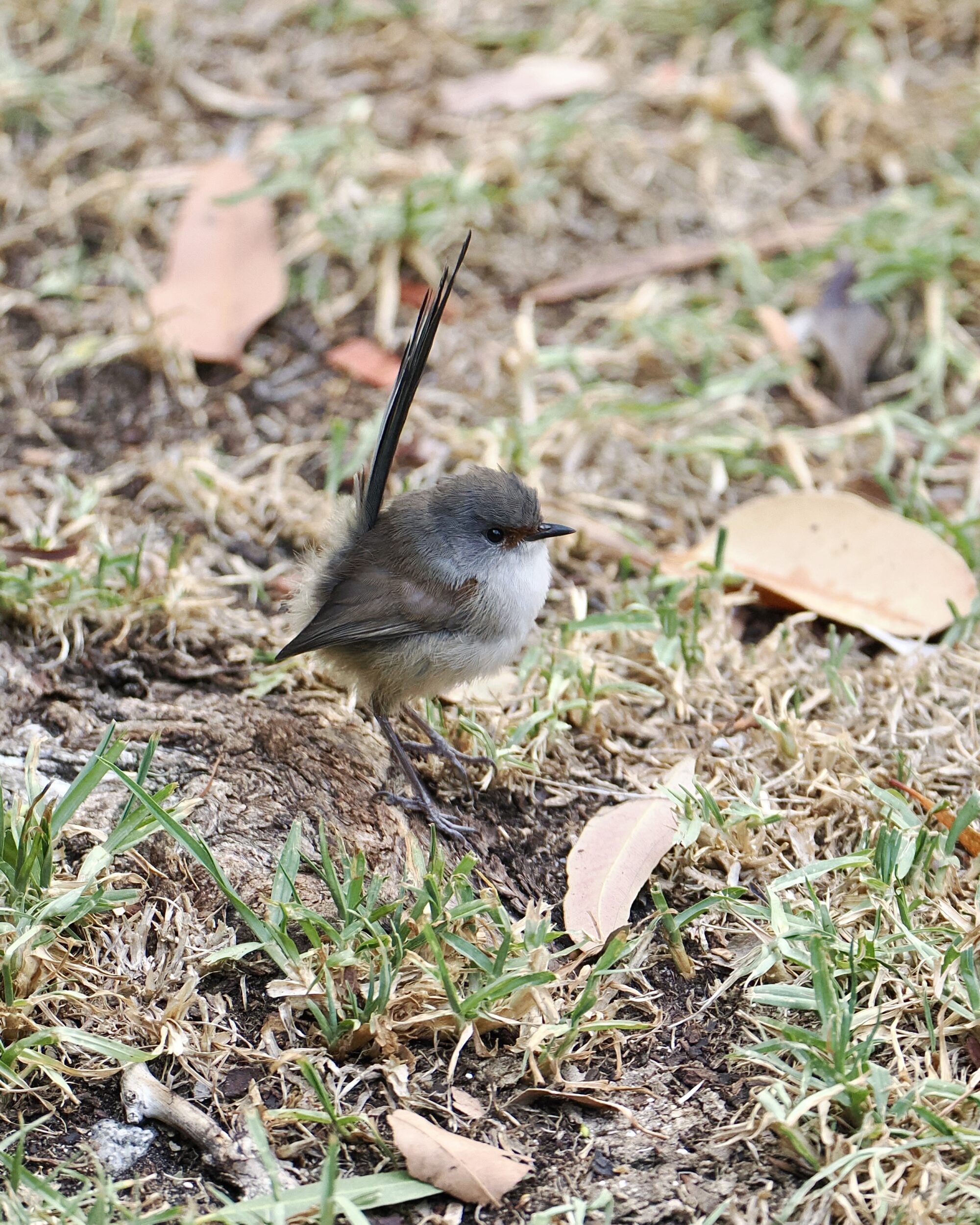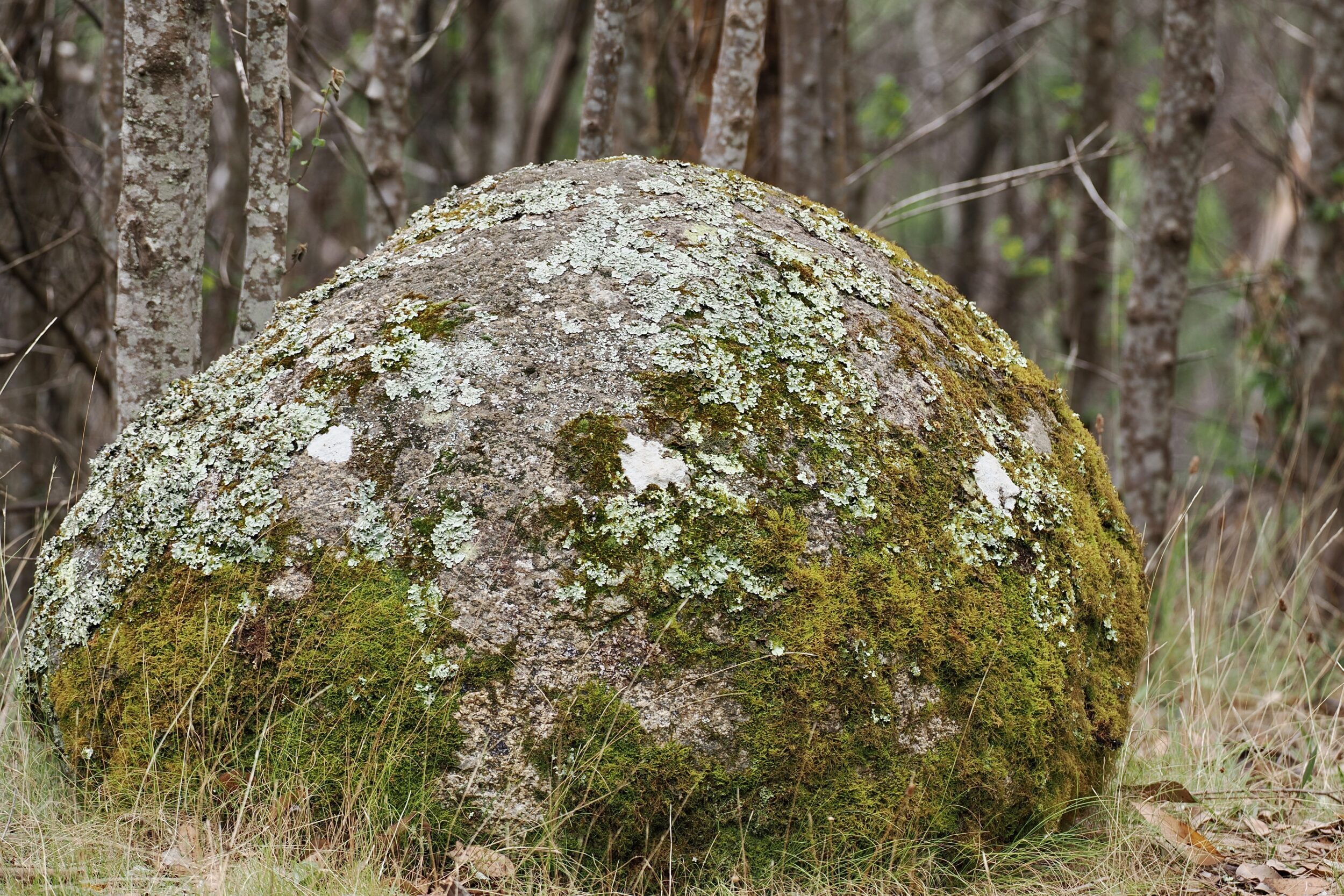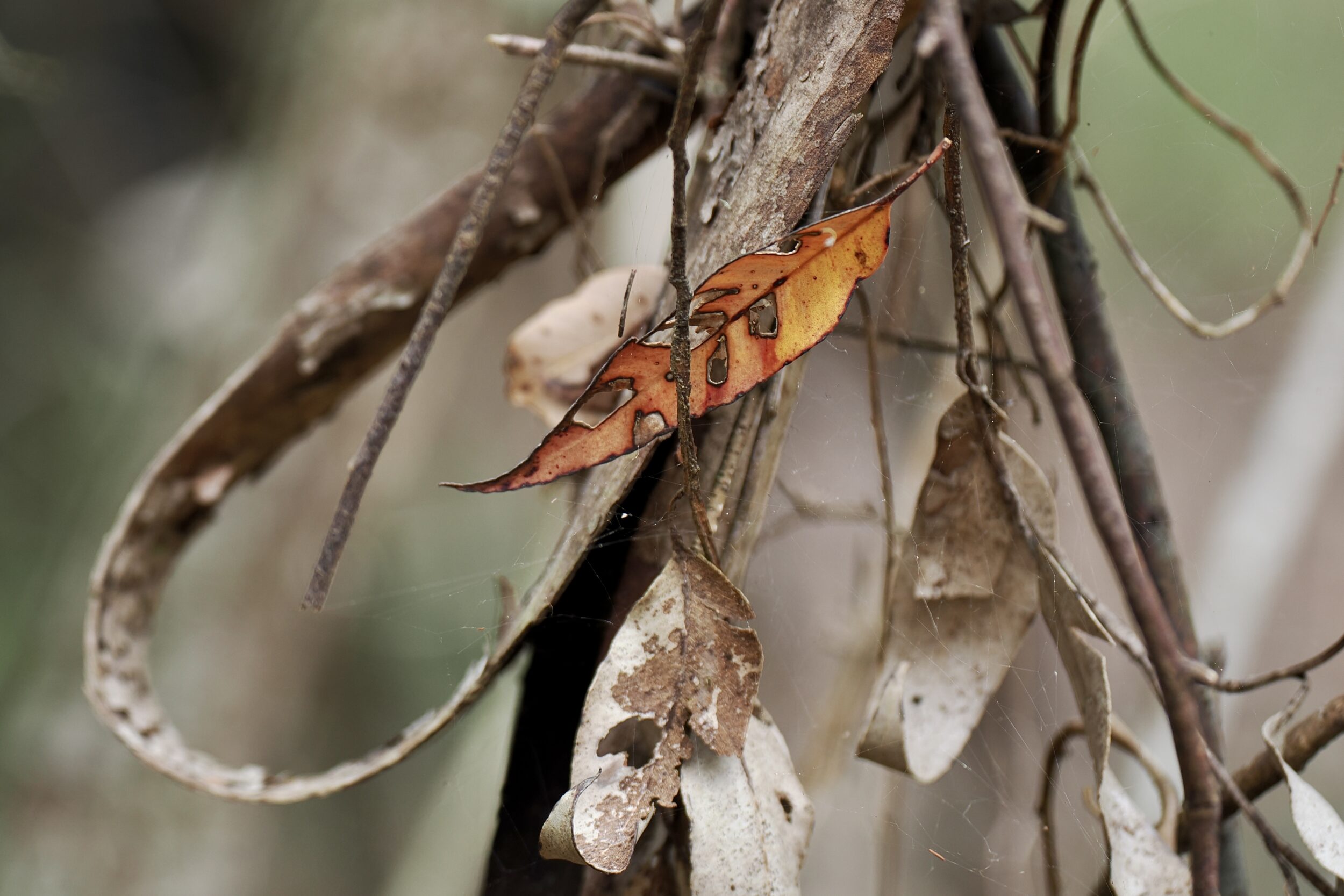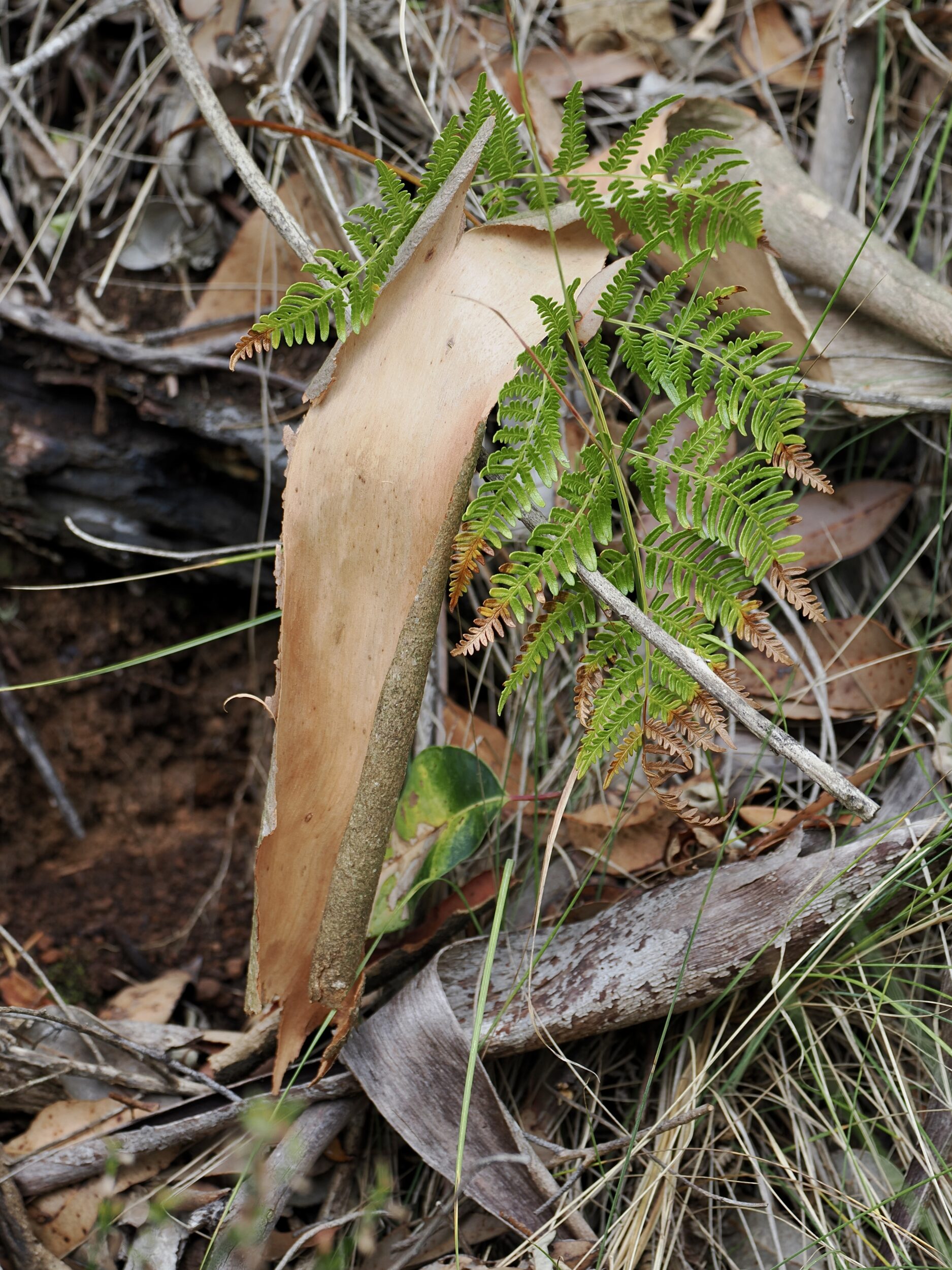As is true of humans’ bathrooms, bathhouses and drinking venues, other species’ “watering holes” can be a “serene place of refuge” at one time of day, and “mayhem” at another.
On 08 February 2025, 3pm to 4 pm was “peak hour” at the birdbath in front of “our” cottage near Youngs Siding.
It looked sorely in need of an Air Traffic Control Tower!
Leave a Comment